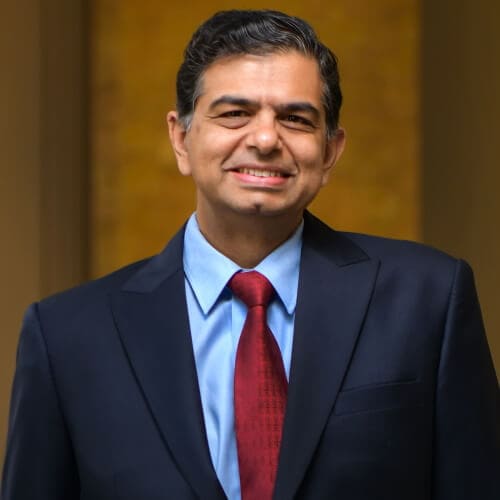
Budget 2022 paves the way for India’s formal entry into the digital currency domain by introducing distributed ledger technology enabled digital currency and making it a legal tender.
Union Budget 2022–23, presented by the Finance Minister, builds on the vision set out in the previous budgets and provides a blueprint for steering the economy towards a sustained high-growth trajectory in the 25-year-long lead-up to India @100.
The budget provides a framework for growth by focusing on four key themes: (i) public investment for building modern infrastructure under PM Gati Shakti; (ii) inclusive development; (iii) productivity and investment, sunrise opportunities, energy transition, and climate action; and (iv) financing of investment. Additionally, the Finance Minister has announced several tax and regulatory measures which should go a long way towards removing difficulties faced by taxpayers, reducing litigation, providing certainty and widening the tax base.
Key amendments to the Finance Bill, 2022 – Enacted
The Finance Bill, 2022 (Amended Bill) was passed by the Lok Sabha on 25 March 2022 with amendments to the original Bill that was tabled before the Lok Sabha on 1 February 2022. Subsequently, the Bill was affirmed by the Rajya Sabha without any further amendments and has now been enacted.
Union Budget 2022-23 Analysis (PDFs)
Powering sustained growth: Union Budget 2022-23
This Budget has provided a blueprint for fueling India’s aspirations and expectations as the country commences its journey towards India@100. Explore our analysis and understand the implications on your business.

Union Budget 2022-23: Key proposals for the Financial Services Sector
The proposals, announcements and amendments impacting various sectors demonstrates the Government's intent to develop digital infrastructure.
Vivek Prasad, Markets Leader, weighs in on the implications of the Union Budget 2022-23
"Budget 2022 highlights the government’s thrust on building a robust foundation for a pro-development, growth-oriented economy and provides a blueprint for a #FitForFuture India," says PwC's Vivek Prasad.
budget-reaction-vivek-prasad
Insights
Key announcements and Impact
The budget has announced the ‘National Tele Mental Health Programme’ which will include a network of 23 tele-mental health centres of excellence, with NIMHANS being the nodal centre.
Under the Ayushman Bharat Digital Mission, an open platform consisting of digital registries of various health providers and facilities will be rolled out. This National Digital Health Ecosystem will also include aspects around unique health identity and consent framework, and will assist in enabling universal access to health facilities.
Two hundred thousand Anganwadis (rural child care centres) will be upgraded to ‘Saksham Anganwadis’ with better infrastructure and audiovisual aids. They will be powered by clean energy and thus provide an improved environment for early child development.
Additional spending of INR 600 bn under the ‘Har Ghar, Nal Se Jal’ scheme to cover 38 m households.
Key takeaways
The pandemic revealed a silent mental health epidemic globally. It is estimated that at least one in eight Indians has a mental affliction. Mental health was hitherto an ignored area. The use of telemedicine to diagnose and treat such patients has proved to be highly effective, given the unobtrusive nature of the interaction which also maintains patient privacy. Given the shortage of mental health professionals, especially in rural areas, telemedicine will greatly enhance accessibility for patients requiring psychiatric help. Funding in Indian mental health start-ups has seen exponential growth of 4-5x in the last year.
The National Digital Health Ecosystem is an extension of the various initiatives announced under the Ayushman Bharat Digital Mission in the last couple of months. The digital health register will help create a comprehensive interoperable network to store and fetch health records. An open platform will encourage wider adoption and innovation encompassing start-ups, ensuring UPI-like adoption. It will be key to extend the coverage to the million-plus providers in the country and bring them on this platform. A start has to be made by integrating existing registries. This will need centre-state cooperation, health being a state subject.
One out of five start-ups in India has a healthcare linkage. The benefits in this budget will create an enabling environment for them to increase accessibility and affordability for the larger population.
Providing clean water under ‘Har Ghar, Nal Se Jal’ will help reduce the burden of communicable disease which still remains a major cause of daily-adjusted life years (DALY) (in the country. The prevalence of water, sanitation and hygiene (WASH) related diseases in India is greater than 5% for all outpatient visits and hospital admissions.
Anganwadis are at the forefront of delivering healthcare, especially in rural areas. Upgrading these Anganwadis will enable last-mile delivery of quality care.
Extension of the concessional tax regime of 15% to newly incorporated domestic manufacturing companies will give a boost to domestic manufacturing in the medical devices and technology space.
By Joydeep K Roy, Partner and Leader, Insurance, PwC India
The insurance industry supports all other industries, provides risk mitigation for businesses, offers long-term savings and protection to families, and provides important long-term capital to infrastructure projects. Hence, the budget announcements have a direct impact on industry as well.
- Overall growth of infrastructure projects will automatically increase premiums for these projects[1] [2] . But the promulgation and introduction of surety bonds will open up a fresh stream of insurance revenue and capital and can even invite many specialised insurance companies to come to India with foreign capital.
- With the introduction of a core banking system (CBS) in post offices, they would also be able to provide a much-needed avenue for deep rural penetration of microinsurance, if properly implemented from the beginning as a strategic initiative. Postal insurance schemes should immediately be brought under the regulatory landscape like all other PSUs and then the real penetration can be measured and augmented suitably.
- Introduction of more technology in agriculture will lead to an increase in data quality and timeliness of its utilisation, leading to a much-needed impetus to agri insurance.
- India is a land of SMEs and MSMEs, with a lion’s share of the GDP being generated and managed through these small businesses. However, these are not really part of the formal economy, and reforms such as health and life benefits for employees, premises insurance, industrial injury and liability insurance should be looked at as an integral part of operations.
- All developed economies have a lower cost of distribution, but India needed a higher loading which would enable a whole profession of financial distributors to take products to the financially excluded. With the digital revolution, buying cycles and demand generation are changing considerably, and a regulatory push towards reducing distribution cost is only to be expected. However, caution needs to be exercised to avoid any drastic step which may hurt the entire drive for increased insurance penetration.
Key announcements and Impact
- Continued focus on electric mobility with the announcement of a battery swapping policy and clean mobility zones in cities will push increased adoption of EV.
- Commitment to expand highways by 25,000 km will be a demand catalyst for the commercial vehicle (CV) segment.
- Enhanced spend on rural infrastructure and large outlay for MSP will ensure further rural economic growth. This will support demand for the two-wheeler and tractor segments in particular.
- Extension of ECLGS to MSMEs will ensure continued liquidity for small businesses which will have a positive impact on capital purchases, including CVs.
Key takeaways
- The PM Gati Shakti National Master Plan that focuses on multi-modal connectivity will reduce logistics cost and improve the transport network. This will have an indirect impact on the CV industry, with a positive impact on heavy trucks and light CVs.
- Additional excise duty of INR 2/litre on unblended fuel to be imposed from 1 October 2022. This will encourage blending of fuel and we expect OEMs to further invest in clean and blended fuel engines.
Digital Rupee |
RBI to introduce Digital Rupee using blockchain technology in 2022–23 | Digital Rupee, a Central Bank Digital Currency, is expected to promote transparency, traceability and convenience. It can be interoperable with other global digital currencies and issued as legal tender backed by the Central Government in lieu of currency notes and coins. |
|---|---|---|
| Virtual digital assets | The Government has proposed to launch a scheme for the taxation of virtual digital assets (e.g. cryptocurrencies, NFTs). Income from virtual digital assets to be taxed at 30%. Losses from the sale of virtual digital assets cannot be offset against other income. Gifts of cryptocurrencies to be taxed at the receiver’s end. | This move formally brings virtual digital assets such as cryptocurrencies and non-fungible tokens under the tax net, thereby increasing the probability of virtual digital assets being recognised by the government. It also accelerates the probability of the crypto bill being formulated and approved. |
| Financial support for the digital payment ecosystem | The financial support for the digital payment ecosystem announced in the previous Budget will continue in 2022–23. | Last year, the FM had earmarked INR 1,500 crore for a proposed scheme that will provide a financial incentive to promote digital modes of payment in order to give a further boost to digital transactions. Part of this can be used for reimbursement of zero MDR fees for UPI and RuPay debit transactions (P2M). |
| Anytime–anywhere post office savings | In 2022, 100% of 1.5 lakh post offices will shift to the core banking system. | Getting the post offices on the core banking system is expected to increase access of these accounts to digital channels like net banking, mobile banking and ATMs, thereby increasing the number of digital payment transactions in the country. |
Digital banking units |
75 digital banking units to be set up across 75 districts | The Government has proposed to set up 75 digital banking units in rural areas to enable all sections of society to get the benefits of digital payments innovation. This is expected to be in the form of digital kiosks which will be staffed and other banking services that can be provided. |
| Online e-bill system | Government to introduce a completely paperless, online e-bill system to manage payments | As a further step to enhance transparency and to reduce delays in payments, a completely paperless, end-to-end online e-bill system will be launched for use by all Central ministries for their procurements. The system will enable suppliers and contractors to submit their digitally signed bills and claims online and track their status from anywhere. There is a possibility of linking the payment gateway to this system to facilitate ease of payments fund flow. |
| Gujarat International Finance Tec-City (GIFT City) – payments business set-up | World-class foreign universities and institutions will be allowed in the GIFT City to offer courses in various areas such as financial management and FinTech. To facilitate the availability of high-end human resources for financial services and technology, domestic regulations will not apply to these institutions. | Government support for the development of a FinTech hub in GIFT City would provide smaller digital payments technology firms with a platform to explore and innovate more cost-efficient and easily adaptable financial products. |















